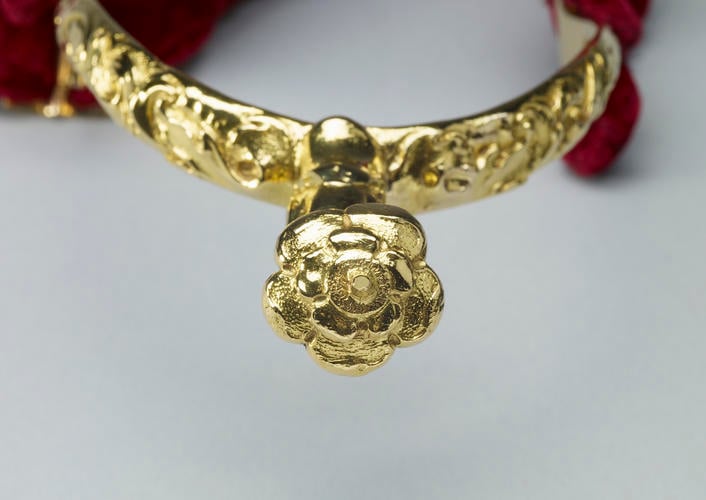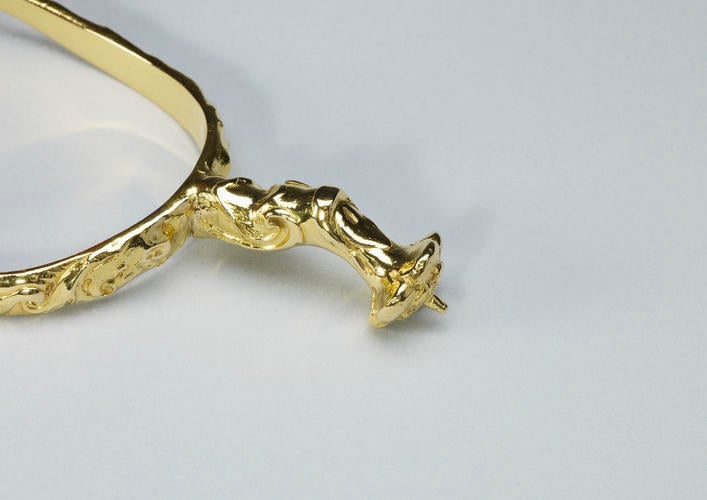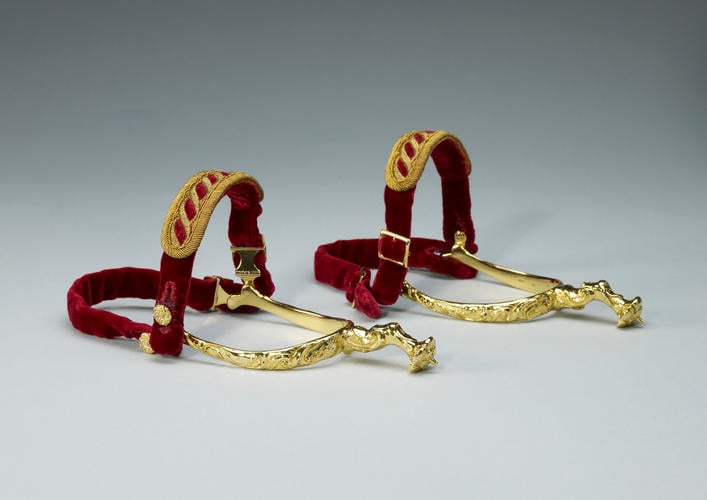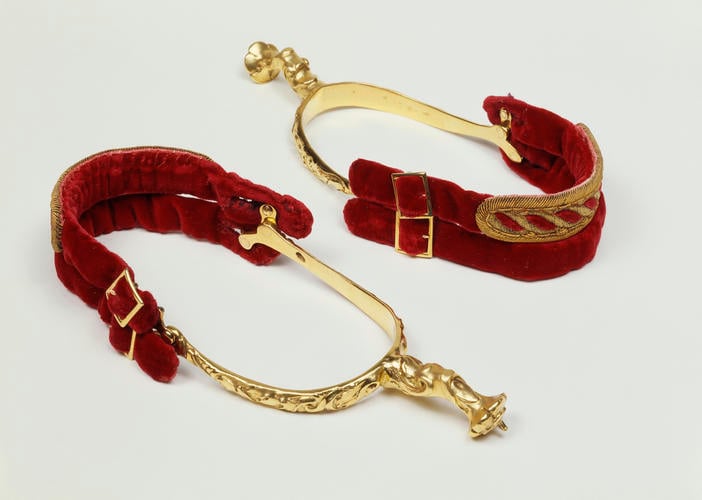-
1 of 253523 objects
The Spurs 1661 with 1820 additions
Gold, leather, velvet and gold thread | RCIN 31725

Sir Robert Vyner (1631-88)
The Spurs 1661 with 1820 additions

Sir Robert Vyner (1631-88)
The Spurs 1661 with 1820 additions




-
A pair of gold prick-spurs, each with a short neck at the back swelling at the end to a Tudor rose with a spike at the centre; the outer sufaces cast in low relief with auricular foliage, scrolls and gadrooning; narrow velvet covered straps attached by buckles, with gold embroidery.
Gold spurs were first included among the English coronation ornaments in 1189, at the coronation of Richard I (the Lionheart). They symbolised knighthood, and their use in the coronation ritual derives directly from the ceremony of creating a knight. Like the rest of the regalia, the original spurs did not survive the Interregnum and this pair was newly made in 1661 for Charles II. They were altered in 1820 for George IV, when new textiles replaced the earlier buckles and straps.
The spurs are representative of knighthood and form part of the coronation ceremony in which the sovereign is invested with the ornaments or symbols of royalty. The sovereign is first anointed with holy oil and the presented with the robes, armills, swords, orb, ring, sceptres and spurs. Traditionally the spurs were fastened to the sovereign's feet but since the Restoration they have simply been held to the ankles of kings, or in the case of queens regnant, presented and then placed on the altar. After the investiture the sovereign is then crowned.Provenance
Supplied for the coronation of Charles II in 1661 by the royal goldsmith, Robert Vyner (later Sir Robert Viner)
-
Creator(s)
(retailer/supplier)(jeweller)Acquirer(s)
-
Medium and techniques
Gold, leather, velvet and gold thread
Category
Object type(s)
Alternative title(s)
St George's Spurs, previously known as